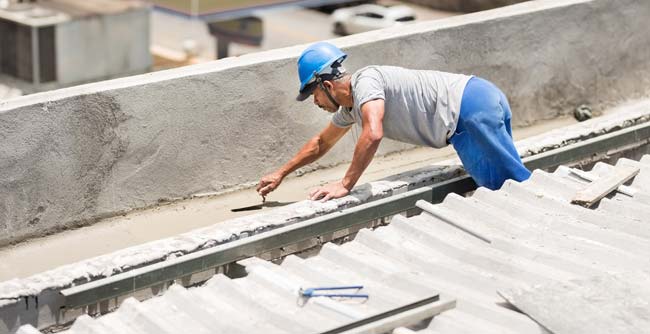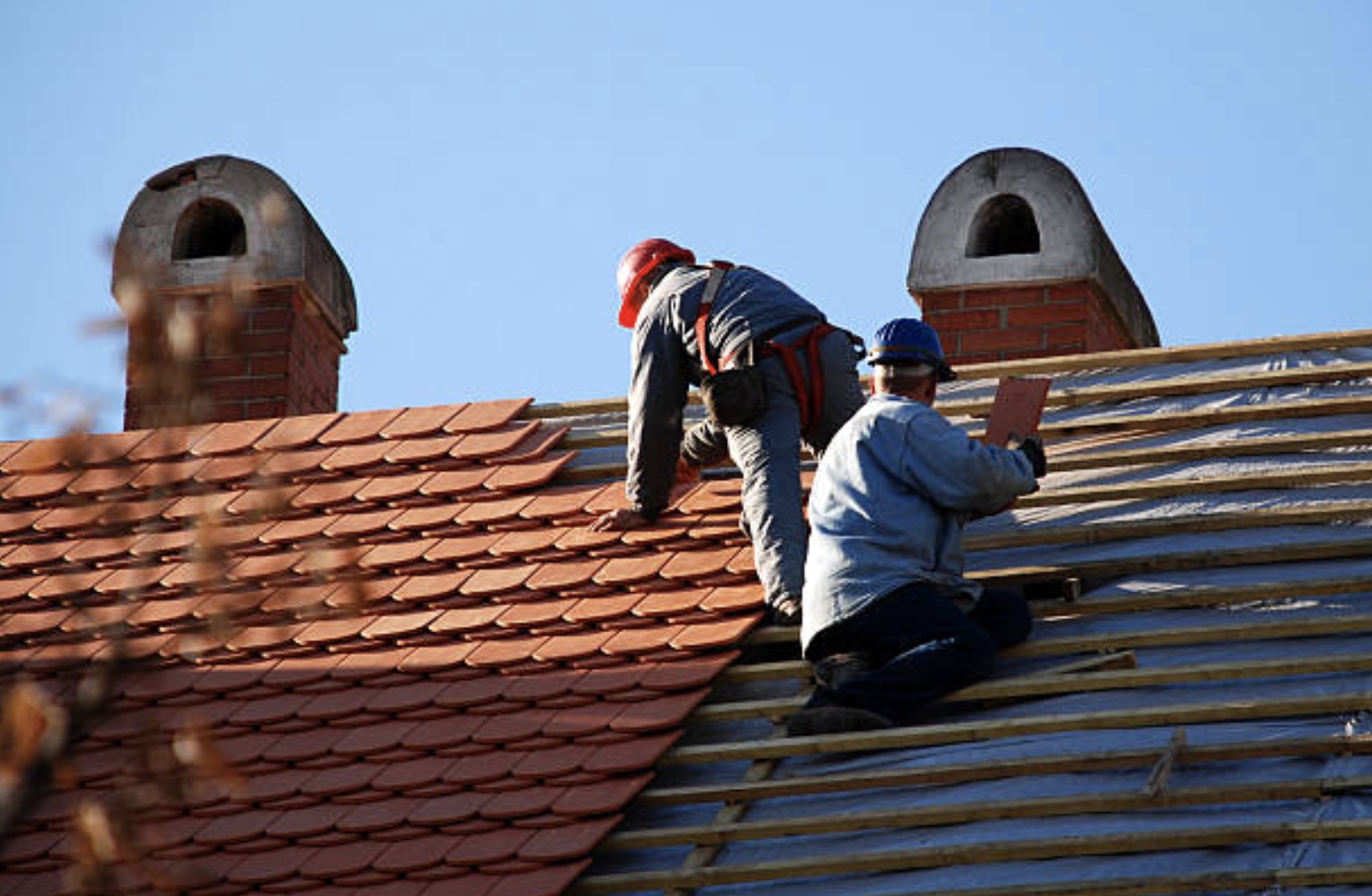A Comprehensive Guide to Effective Roofing Flat Roof Setup
The complexities of level roofing installation demand a meticulous approach, beginning with a comprehensive understanding of numerous flat roof covering types and the vital materials needed for ideal efficiency. A successful installment pivots not only on the selection of products however also on the preparation and execution of each action entailed in the procedure.
Understanding Flat Roof Covering Types
When considering level roofing systems, it is vital to recognize the different kinds available, as each deals distinct benefits and disadvantages customized to certain needs. One of the most common sorts of flat roofings consist of Built-Up Roof covering (BUR), Modified Asphalt, and Single-Ply membrane layers.
Built-Up Roof contains several layers of asphalt and crushed rock, offering excellent sturdiness and weather resistance. It is especially valuable in areas susceptible to serious climate condition however might require even more maintenance because of its intricate construction.
Customized Asphalt is a popular choice for its ease of installment and adaptability. It usually utilizes a torch-applied or self-adhesive method, which can be helpful for fast repair services and lasting performance. Its lifespan can be much shorter compared to BUR.
Single-Ply membrane layers, consisting of Thermoplastic Olefin (TPO) and Ethylene Propylene Diene Monomer (EPDM), are recognized for their lightweight nature and power performance. These materials are commonly preferred for commercial buildings as a result of their cost-effectiveness and ease of setup (Cleveland Roofing Specialists). They might not offer the same degree of insulation as various other choices.
Each roof type calls for mindful consideration based on climate, budget, and certain job requirements.
Crucial Products for Flat Roof Covering
A selection of crucial materials are critical for the effective setup of flat roof. The option of products straight effects toughness, performance, and total efficiency.
One of the primary materials is the roofing membrane, which can be built from various compounds such as thermoplastic polyolefin (TPO), ethylene propylene diene monomer (EPDM), or PVC. Each type provides special advantages, consisting of UV resistance and versatility, which are vital for long term performance.
Along with the membrane layer, insulation products play a considerable function in power performance. Stiff foam boards or polyisocyanurate insulation are prominent options, as they give exceptional thermal resistance and wetness monitoring.
Moreover, roof covering adhesives and sealers are essential for guaranteeing a watertight installation. These items need to be suitable with the chosen membrane layer to prevent deterioration over time.
Planning For Setup
Proper preparation is vital for an effective level roofing system installation, as it lays the foundation for a efficient and resilient roof. Begin by performing a detailed assessment of the existing roof covering framework. Look for indications of damage, including leakages, rot, or inadequate drainage, which can endanger the brand-new roof system. Ensure that the hidden products are sound and can support the weight of the brand-new roof elements.
Next, gather all needed tools and products, ensuring that they fulfill sector criteria. This includes waterproof membranes, insulation, blinking, and fasteners. Acquaint on your own with the manufacturer's requirements, as adherence to these standards is critical informative post for guarantee functions.
In addition, guarantee that the workplace is free from particles and blockages to assist in reliable and safe setup. Consider weather; avoid installment throughout heavy rainfall or extreme temperature levels, which can affect product efficiency. Lastly, educate any kind of owners of the building regarding the approaching work to ensure safety and security and decrease interruptions. By taking these primary actions, you can boost the possibility of an effective level roof installation that fulfills both architectural and aesthetic demands.
Step-by-Step Installation Refine
With the foundation developed through thorough preparation, the following phase includes performing the level roofing system setup methodically. This action is critical for preserving the roofing system's integrity over time.
Complying with the vapor barrier installment, lay down insulation boards, ensuring they fit tightly together to lessen thermal connecting. Secure the insulation with ideal bolts based on the his explanation roof covering kind and local building codes. When the insulation is in place, it's time to use the roof membrane. Depending upon the selected product-- such as TPO, EPDM, or customized bitumen-- mount the membrane layer according to the maker's specifications.
Ensure correct overlap at edges and seams to produce a watertight seal. Use adhesives, mechanical bolts, or warm welding as required. Mount blinking around perimeters, vents, and any kind of roofing penetrations to boost waterproofing. After setup, carry out a comprehensive evaluation to identify any type of possible concerns before ending the project, ensuring a robust and trustworthy level roof system.
Maintenance Tips for Long Life
Regular upkeep is vital to ensure the longevity and performance of a flat roofing system. One of the primary tasks is to carry out regular assessments a minimum of two times a year, preferably in spring and autumn. Throughout these evaluations, seek indications of wear, such as blisters, cracks, or merging water, which can indicate underlying concerns.

Ensuring correct water drainage is vital to stop water build-up. Inspect and clear gutters, downspouts, and scuppers to assure unblocked water circulation. Additionally, evaluate seals around vents, skylights, and other penetrations for any signs of wear and tear, using caulk or sealer as needed to maintain a water tight obstacle.
Last but not least, consider expert upkeep solutions every couple of years for complete maintenances. By sticking to these upkeep suggestions, you can considerably extend the life of your flat roof, guaranteeing it remains a reputable shield against the elements.
Conclusion
Efficient level roof installation necessitates a systematic technique encompassing extensive inspections, product option, and meticulous prep work. Sticking to the laid out steps during the installation procedure makes sure the appropriate application of roofing membrane layers and insulation while improving waterproofing through efficient flashing installment.
The details of level roofing system installment need a precise technique, beginning with a thorough understanding of numerous Your Domain Name level roofing system kinds and the essential products required for ideal efficiency.Appropriate prep work is necessary for an effective level roof installation, as it lays the foundation for a durable and efficient roof system. After installation, perform a comprehensive inspection to recognize any prospective issues before concluding the project, making certain a robust and dependable level roof covering system.
